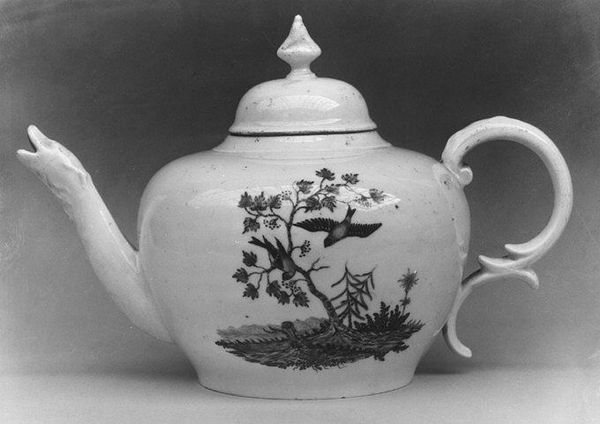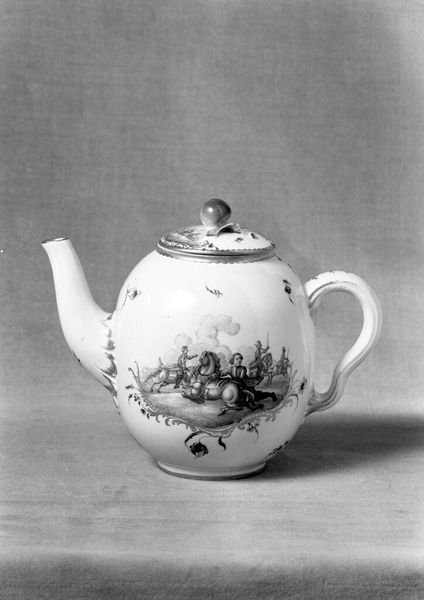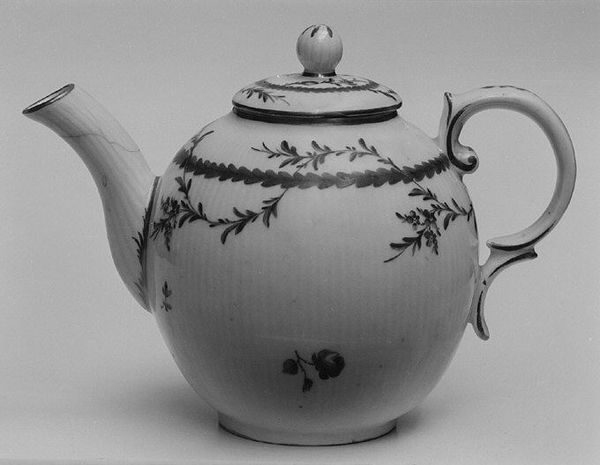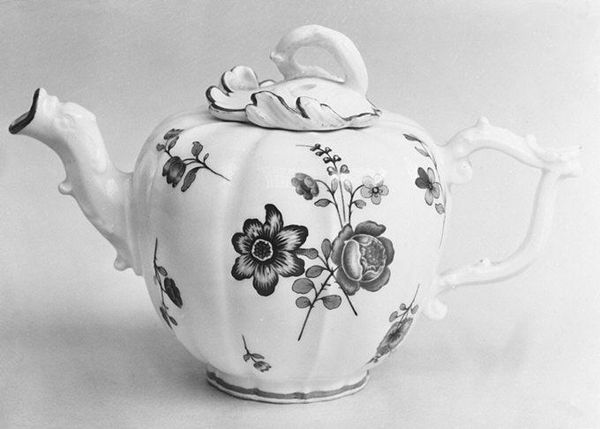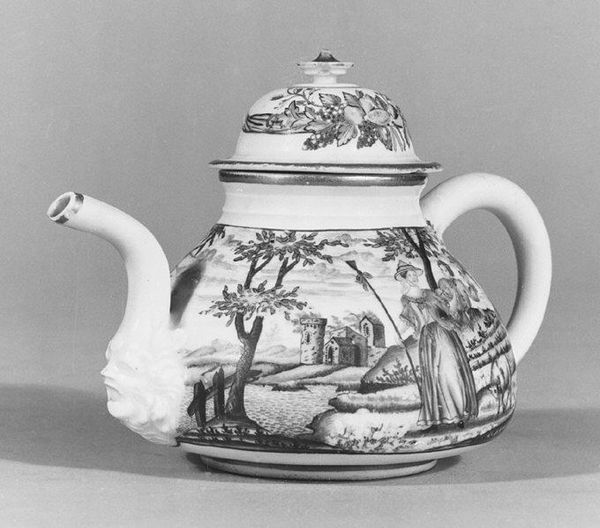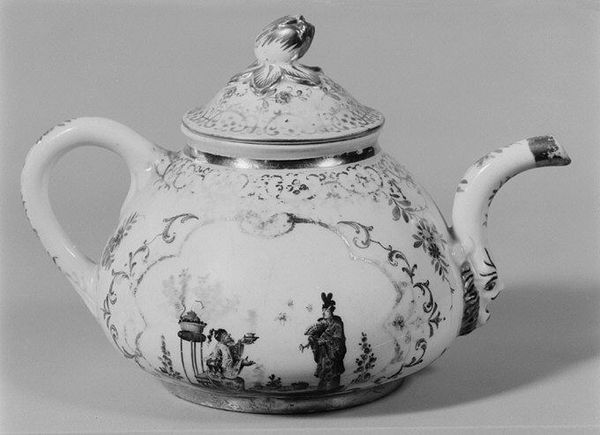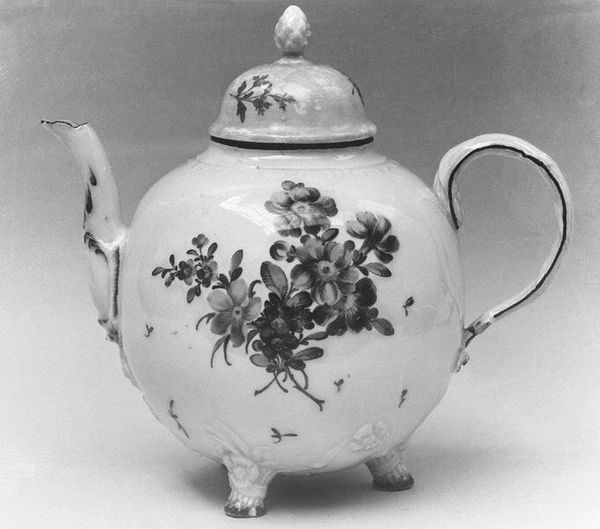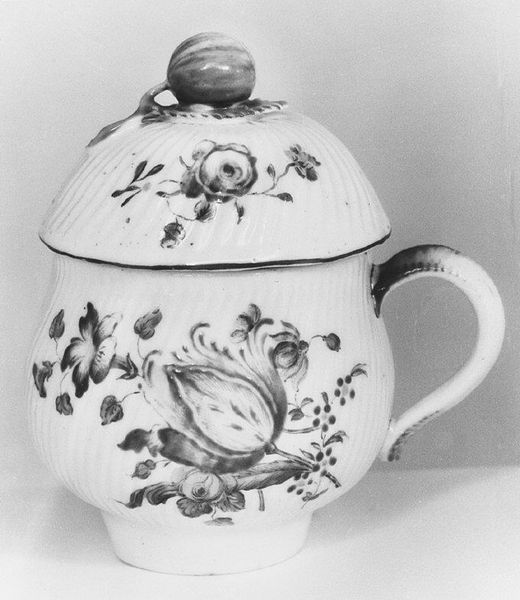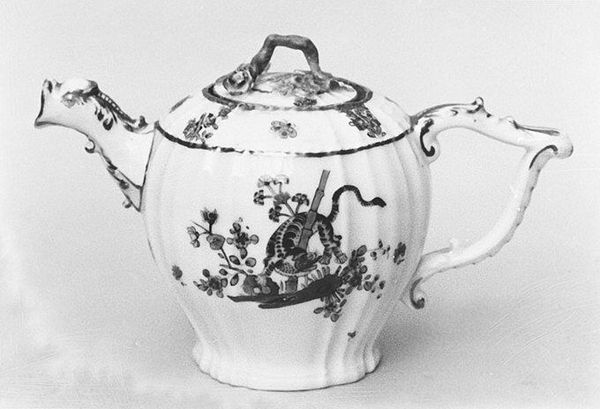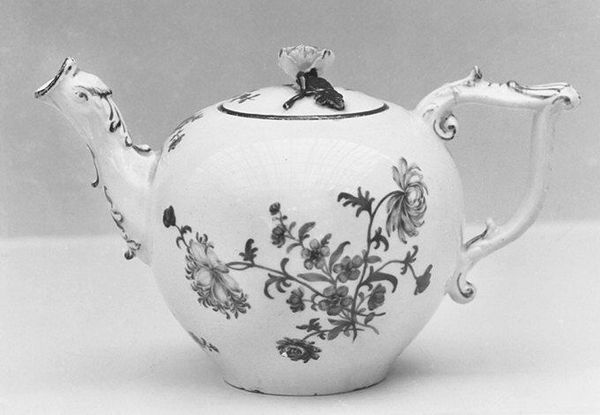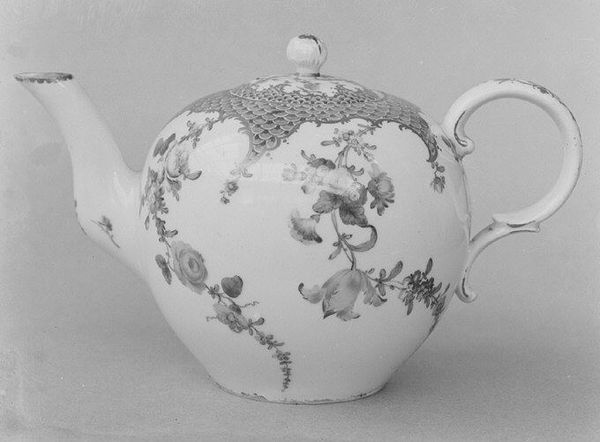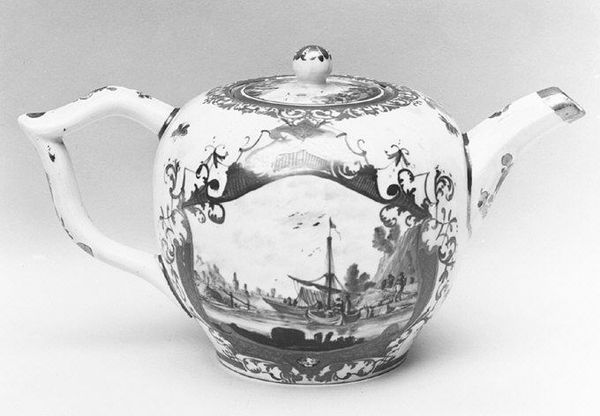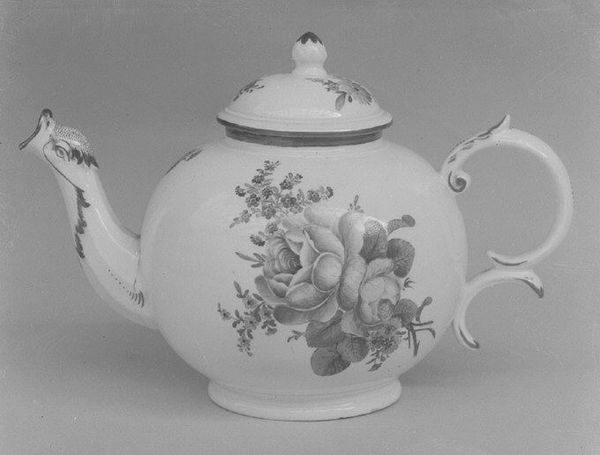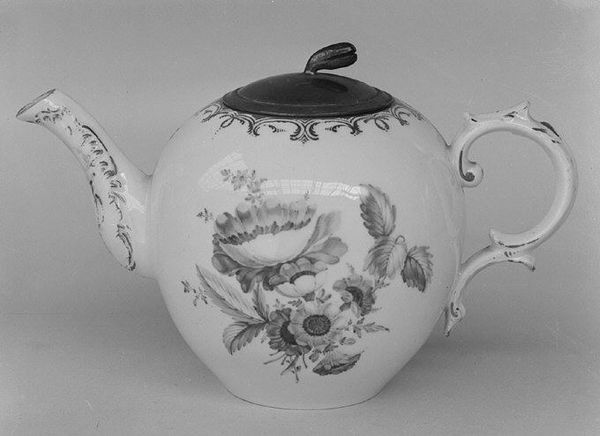
ceramic, porcelain, sculpture
#
human-figures
#
asian-art
#
ceramic
#
porcelain
#
figuration
#
sculpture
#
decorative-art
Dimensions: Height: 6 in. (15.2 cm)
Copyright: Public Domain
This porcelain teapot was produced in Vienna, sometime in the 18th century. Its surface is decorated with scenes of Chinese figures, reflecting the fashion for what was known as ‘chinoiserie.’ This vogue took hold across Europe as trade routes opened up with the East. The exotic and unknown, the ‘Orient,’ became a source of fascination and fantasy. Images of Chinese life, often wildly inaccurate, were reproduced on all sorts of decorative objects, like this one. Here, we might consider the politics of imagery and the social conditions that made this kind of artistic production possible. We can analyze the teapot's shape, decoration, and materials, and we can also research the history of trade, colonialism, and cultural exchange that shaped its creation. What did it mean for European manufacturers to imitate Chinese styles? How did these images reflect and reinforce existing power dynamics between East and West? By examining the teapot in its social and institutional context, we can begin to understand the complex meanings it held for its original owners and continues to hold for us today.
Comments
No comments
Be the first to comment and join the conversation on the ultimate creative platform.
